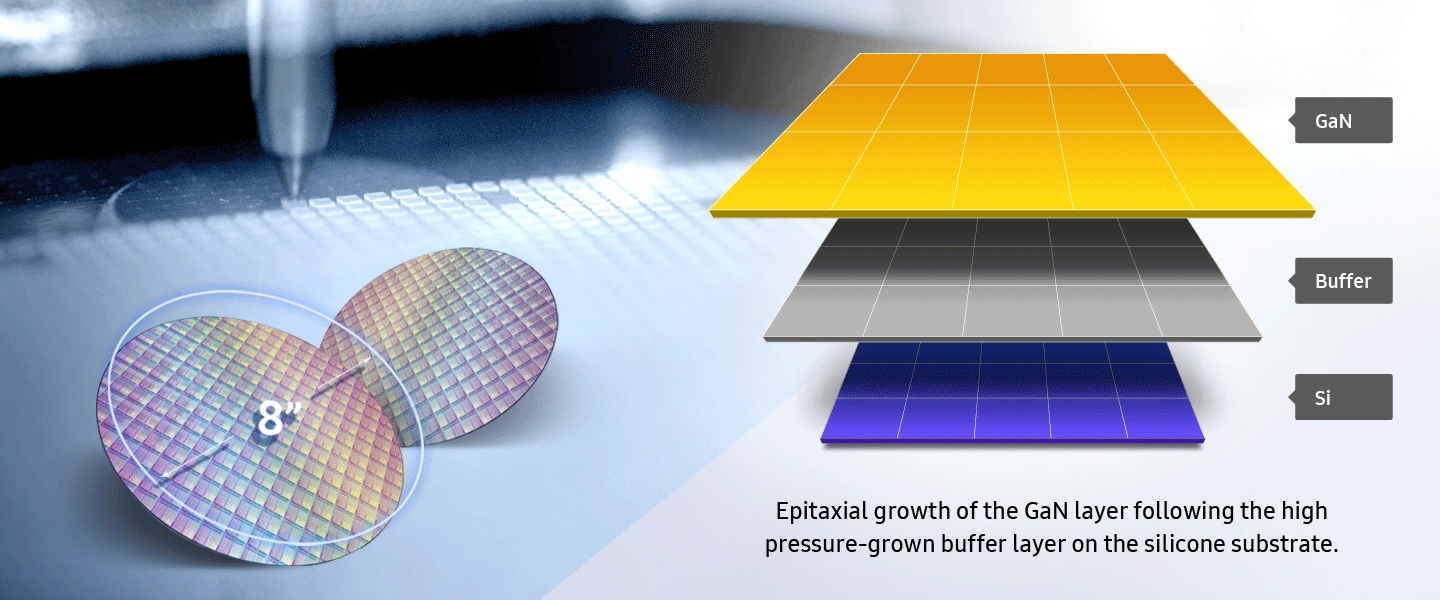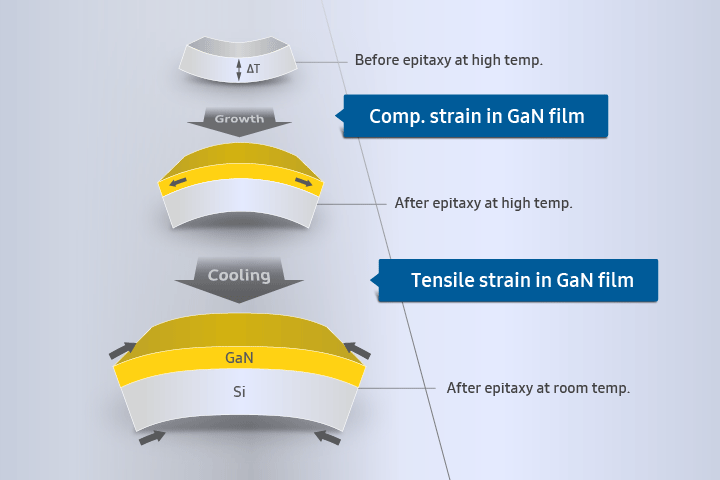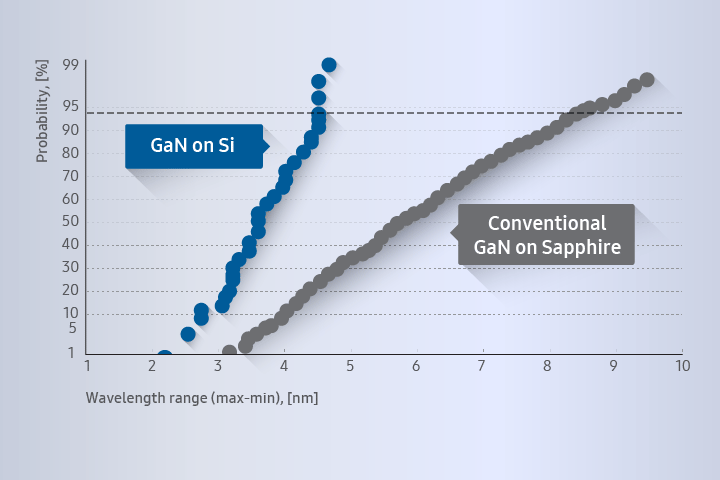Samsung’s silicon-based LED technology has grown out of its semiconductor excellence, and is expected to change the paradigm of the LED industry, which has largely relied on sapphire substrate. As a substitute for sapphire, silicon will greatly decrease the cost of LED devices and still offer equivalent or even better light efficiency and uniformity.
Samsung has introduced high-pressure growth technology to reduce dislocation caused by the lattice mismatch between the GaN and Si substrate, and improve crystalline quality of the LED structure. Chamber hardware has also been optimized to improve uniformity while maintaining high productivity.





 Copyright ⓒ 1995-2023 SAMSUNG All Rights reserved.
Copyright ⓒ 1995-2023 SAMSUNG All Rights reserved.